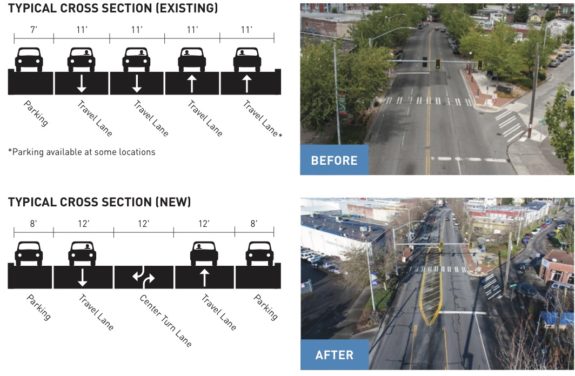
A 2015 safe streets redesign on Rainier Ave is working even better than expected by nearly every measure.
Just by repainting the lines on the major street, the city’s Vision Zero team was able to dramatically reduce the number of dangerous collisions, nearly eliminate high-end speeding, speed up transit, and fully eliminate serious injuries and deaths. Meanwhile, delays for people driving were minimal, clocking in well below pre-construction estimates, according to a new report (PDF).
In other words, Rainier Ave now works better for everyone.
The new report comes out as SDOT starts public outreach for an extension of the safety project from the current project boundary south of Hillman City all the way to Rainier Beach, where safety improvements were completed in recent years. When the new project is complete, Rainier Ave will be significantly calmed from Columbia City to the southend city limits.
Details on an upcoming meeting and a project online survey from SDOT:
We want to hear about your experiences traveling on Rainier Ave S. This will help inform Phase 2 of the project and let us know how Phase 1 is working.
Click here to take our survey.
Or come talk to us in person at this upcoming event! We’ll share Phase 1 results and talk about extending changes from S Kenny St to S Henderson St.
- March 7: We ❤ Southeast Seattle:Investing in Rainier Ave S Community Forum
- Emerald City Bible Fellowship, 7728 Rainier Ave S, Seattle, WA
- 5:30 PM-7:30 PM
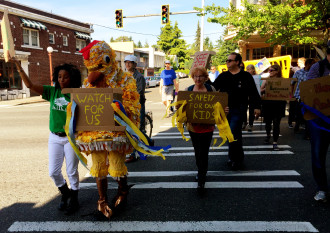
The safety project happened after a lot of community pressure, including a protest in Columbia City decrying the outsized danger of the Rainer Valley’s most important street.
In the ten years prior to the changes, 11 people were killed and 1,700 people were seriously injured on the four miles of Rainier Ave south of Mount Baker. That’s a neighbor, co-worker or loved one seriously injured every two days just on this one street. The collision rate was much higher than even Aurora or Lake City Way, which are also among the city’s most dangerous street.
The protestors made the point clearly: Without city action to improve safety, this immense amount of pain and suffering would not end.
As the data shows, they were right. After safety changes went into place, collisions declined. But most importantly, the most dangerous kinds of collisions (head-on, left turn) went way down, offset by small increases in less dangerous fender-benders:
Serious injuries and deaths were eliminated.
To put that another way, more than a dozen people are living their daily lives right now completely oblivious to the fact that without this safety project, they would be suffering potentially debilitating, lifelong injuries. One of those dozen people could be your best friend. Or your mother. And at least one person’s life was spared.
These are very powerful public health outcomes. We have a moral obligation to extend and repeat this success.
Much of the reduction in serious injuries and deaths is due to a safer street design that makes turning movements and crosswalks safer and easier. But another major element is due to a major decrease in speeding. Speeding decreased significantly, but top-end speeding (people going 40 mph or faster) went down by an astounding 73 to 81 percent. Only 1 – 2 percent of people driving on Rainier today are going faster than 40 mph.
But a major reduction in speeding did not translate into significant increases in travel times, which I understand seems counterintuitive. But changes to signal timing and adding a center turn lane has made the street much more efficient.
Four-lane streets are designed to operate like rural highways with relatively few turning movements. But the Rainier Valley is not farmland. It’s a destination-packed corridor through the heart of many business districts and neighborhoods. That means many people are trying to make turns, and every time someone puts their blinker on and comes to a stop, traffic behind them slows or stops. Often people make dangerous lane changes to get around the person waiting to turn. It’s dangerous, and it doesn’t work.
A center turn lane allows each direction to continue moving, which increases the efficiency of the street while also using less space. In the Rainier pilot project, that extra space was used to add on-street parking, but it could also be used for bike lanes.
The result is that driving times increased by just a single minute despite big decreases in speeding. For all the immense benefits we’ve discussed, that’s an insignificant trade-off.
Vitally, transit travel times improved by three minutes northbound and stayed the same southbound. Keeping Metro’s very busy Route 7 bus on schedule was a major goal of the project, and planners did even better.
Traffic volumes on Rainier Ave decreased as more people took MLK Jr Way instead. Traffic on Lake Washington Blvd and Seward Park Avenue also dropped slightly after the changes went into place, which is good news for neighbors who were concerned about increases in side street traffic. That didn’t happen, according to the report.
So even though the project extension is already a year behind schedule, it’s great news that the city is moving forward. There’s essentially no reason to stop the project now. The question is: Can it be even better?

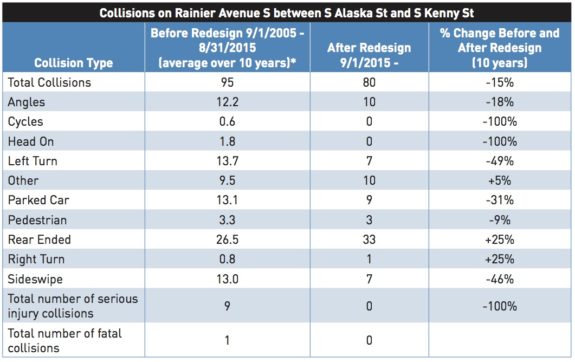
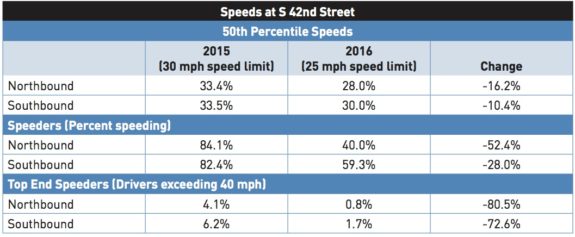
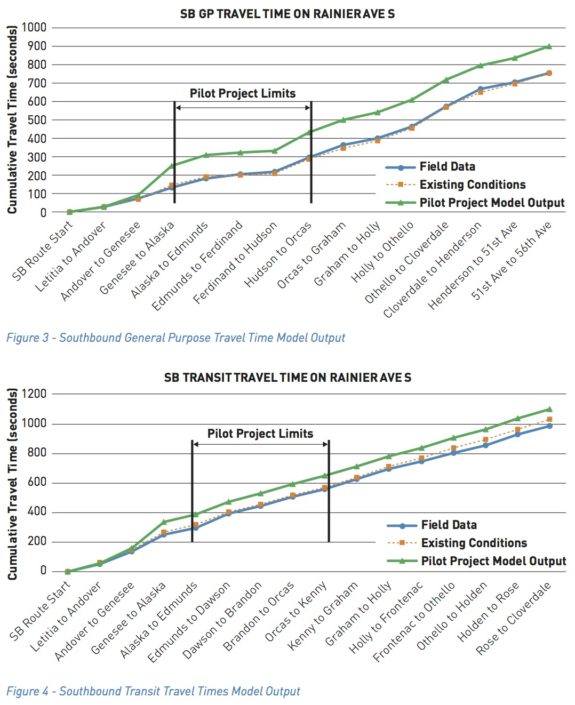



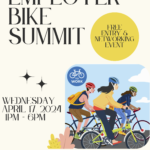





Comments
19 responses to “Rainier Ave safety project worked even better than planned, city will extend it south”
Great article, lessons to be deployed everywhere else now!
Like many others, judging by the traffic volumes, I’ve quit using Rainier in lieu of either residential streets or Seward Park Ave to get from SE Seattle to anywhere North. Total bottleneck each morning and evening once you get to Columbia City.
Except…they didn’t
” Traffic on Lake Washington Blvd and Seward Park Avenue also dropped slightly after the changes went into place, which is good news for neighbors who were concerned about increases in side street traffic. That didn’t happen, according to the report.”
I really wish the city would install barriers in more places to physically prevent thru-traffic. Imagine how much calmer Lake Washington Blvd. would be if every couple of miles, there was barrier where bikes could go past, but cars couldn’t.
With the advent of gps navigation, I see drivers cut through neighborhoods time and time again, for no other reason than that the gps told them to do it because a computer somewhere thought it would save 10 seconds of travel time. Ultimately, the old way to prevent cut-through traffic is to physically block it.
What on Earth are you talking about?
Traffic has lessened on side streets and increased on MLK. Traffic times barely budged and mostly went down.
I drive *more* on Rainier now, when I have to, because it’s slower, safer, and calmer. I don’t fear for my life when changing lanes (because I don’t need to now!), I don’t fear accidentally hitting a pedestrian who’s blind to oncoming traffic in a far lane (because that doesn’t exist now!), and so on.
I use the 7 and the 9E more in the mornings to commute to work if I don’t feel like walking an extra block or two to Link, because, well, the bus times seem totally the same as before, even better at times due to having bus lanes.
If I think it’s going to be too slow to drive on, I use MLK, like it’s intended. Have had zero problems using MLK to get North.
The changes have made driving, walking, bussing (but maybe not biking?) better for everyone. More please.
It is a pretty low bar when 50% of drivers speeding is viewed as a traffic calming success. Vision zero requires a 100% compliance so what is Seattle’s plan?
The “zero” in Vision Zero is in relation to traffic deaths. I doubt anyone expects 100% absolute compliance with speed limits all the time …
I do not think anybody actually expects zero deaths either but if you want to get even close to this goal then there needs to be widespread compliance with speed limits. They are there for a reason.
Can Rainier Ave be even better?, asked the BIKE blogger. Yeah, Rainier could incorporate BIKE safety into Rainier (or into this blog post).
Neither Rainier nor MLK incorporate any bike infrastructure b/w I-90 & Rainier Beach. And SDOT has no plans to incorporate any bike safety improvements in the ‘Phase 2’ extension of the Rainier Ave Safety Plan.
Rainier and MLK are the straightest, flattest routes thru the very hilly Rainier Valley, perfect for cyclists. The Rainier Safety Project eliminated a whole lane of traffic- so a bike lane would fit nicely.
Alas, meaningful bike safety in goes unbuilt in SE Seattle, ignored by SDOT, unsupported by regional bike organizations, and unmentioned in this bike blog.
Same as it ever was in Rainier Valley.
PS- Hooray for ped safety on Rainier! I walk too!
That line was a hint at a follow-up post!
[…] S in Los Angeles, which would constrict new housing development, as overly simplistic. And Seattle Bike Blog explains how the city nearly eliminated injury crashes on one of its most dangerous […]
It will be interesting to see how this holds up in the long term. I’d expect people to drive slower and pay more attention following any road layout change, just because the road is now unfamiliar. While some elements of the redesign should cause long-term slower and more attentive driving, the unfamiliarity will fade. I’d expect speed, attentiveness, and collisions settle somewhere between the pre-redesign state and current levels.
Looking at the first chart, “collisions”, I agree with Tom that it is a great improvement. However, some of the improvements are probably statistically insignificant.
For example, the fact that there were an average of 0.6 cycle accidents over the last 10 years and 0 last year doesn’t mean we have a 100% improvement. In fact, I’d like to know, over the last 10 years, how many years had 0 accidents. I’ll bet it’s pretty close to 40%.
On the other hand, seeing the number of serious accidents drop from 9 average to 0 is very significant. And that’s probably the most important statistic of all !
You gotta combine the speed chart with the collision chart to get the full picture. Fewer of the most dangerous kinds of collisions (left turn collisions are often head-on or t-bone crashes, which are very often serious) and, most importantly, at slower speeds. So major crashes are fender benders instead.
Whatever the stats, the improvement on the Phase 1 section of Rainier is profound from a pedestrian perspective.
Reckless, erratic driving (like last second lane changes in intersections) is greatly reduced. Car speeds feel slower. Crossing the street on foot doesn’t feel like entering a combat zone.
Of course, it’s still 5 lanes for cars (2 traffic, one turn, 2 parking) and zero for bikes. But genuine kudos for Ped improves.
[…] works: Seattle successfully tamed one of its major arterials by simply re-striping the lanes in a way very similar to what PBOT has planned for SE […]
The image shown in the article doesn’t even do the “before project” conditions justice, since there were some pretty significant upgrades to the bus stop and a new crosswalk added in the years prior to 2015.
See here for the not-too-distant-past conditions: https://goo.gl/maps/vpnwvrTqvwu
[…] Rainier Ave. redesign worked. […]
Four lanes bad, three lanes good. Not only for safety, but also for mobility. Unless you prevent left turns for a very long stretch (such as on Denny) there is little to be gained with a four lane road versus a three lane one. It sounds counter-intuitive; you would assume that more lanes would move traffic much faster. But the biggest problem with driving is congestion, and the biggest cause of congestion is sudden stops. It is no different than biking. A long, single file peloton works just fine. But whether it is single file or a wide pack, things become a mess if there is a stoppage. Suddenly everyone has to get back up to speed, and that takes a while. The same is true with cars. You might be in the left lane, cruising along, and then the guy suddenly decides to turn left (with no blinker). Now you are stuck trying to get into the right lane. Done wrong, and that means the guy in that lane comes to a complete and sudden stop, sending waves of congestion behind. Done really wrong, and you have an accident, and everything is screwed up for at least 15 minutes (and longer if there is serious damage).
The key is just keep everyone moving, but not too fast. Three lanes does this, which is why it makes sense for most of the city.